 Mysteries
Mysteries  Mysteries
Mysteries  History
History 10 Surprising Stories About the Texas Rangers
 Humans
Humans 10 Philosophers Who Were Driven Mad by Their Own Theories
 Miscellaneous
Miscellaneous 10 Video-Game-Worthy Weapons and Armors from History
 Weird Stuff
Weird Stuff 10 Psychics Who Accurately Predicted Wartime Events
 The Arts
The Arts 10 Pieces of Art Inspired by a Broken Heart
 Health
Health 10 Science Fiction-Sounding New Medical Treatments
 History
History 10 Surprising Facts About the Father of Submarine Warfare
 Space
Space Ten Astonishing New Insights into Alien Worlds
 Weird Stuff
Weird Stuff 10 Bizarre Summer Solstice Rituals Still Practiced Today
 Mysteries
Mysteries Top 10 Haunting Facts About the Ghost Ship MV Alta
 History
History 10 Surprising Stories About the Texas Rangers
 Humans
Humans 10 Philosophers Who Were Driven Mad by Their Own Theories
Who's Behind Listverse?

Jamie Frater
Head Editor
Jamie founded Listverse due to an insatiable desire to share fascinating, obscure, and bizarre facts. He has been a guest speaker on numerous national radio and television stations and is a five time published author.
More About Us Miscellaneous
Miscellaneous 10 Video-Game-Worthy Weapons and Armors from History
 Weird Stuff
Weird Stuff 10 Psychics Who Accurately Predicted Wartime Events
 The Arts
The Arts 10 Pieces of Art Inspired by a Broken Heart
 Health
Health 10 Science Fiction-Sounding New Medical Treatments
 History
History 10 Surprising Facts About the Father of Submarine Warfare
 Space
Space Ten Astonishing New Insights into Alien Worlds
 Weird Stuff
Weird Stuff 10 Bizarre Summer Solstice Rituals Still Practiced Today
10 Terrifying Times Vigilantes Murdered Innocent People
Vigilantes often think that they’re good people who take the law into their own hands to punish criminals that law enforcement can’t (or won’t) touch. In their own minds, they’re the heroes, doing what needs to be done and standing up for the little guy when no one else will.
The problem is that justice without due process can easily turn into plain violence, aimed at the nearest suspicious-looking person. And that’s when innocent people meet horrible fates. The victims in the following ten cases weren’t guilty of anything yet still paid for the misdeeds of others.
10 A Passing Electrician Is Lynched As A Thief
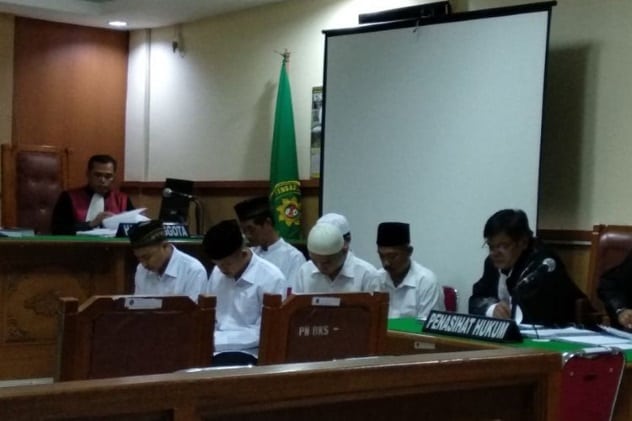
Muhammad al-Zahra was a 30-year-old Indonesian electric repair man from the suburbs of Jakarta. In 2017, a mob of angry men confronted him and accused him of being a thief. Even worse for al-Zahra, the items that he was accused of stealing were the amplifiers of a nearby prayer room. Although al-Zahra swore that he had done nothing wrong, the mob didn’t care. He was beaten to death on the spot, despite the fact that even his very last words were: “I’m not a thief.” Afterward, the mob set his body on fire and screamed triumphantly as it burned. Some sources say poor al-Zahra was still alive as he burned.[1]
Fortunately, the attackers were caught. In court, they wept tears of regret and bowed their heads in shame. They couldn’t explain why they had treated al-Zahra so brutally. It is possible, however, that the incident is linked to the rise of vigilante culture in some parts of Indonesia: A lack of trust in the country’s police and justice system has led to people taking the law into their own hands. This sometimes leads to overkill, when mobs of citizens distribute swift and occasionally fatal justice to petty criminals.
9 The Vigilante Vampire Hunters Of Malawi

In 2017, the country of Malawi started having troubles with vampires—or rather, with the people hunting them. Several vigilante mobs started stalking the country, searching for vampiric villains who drank blood as part of their black magic rituals. Whoever the vigilantes thought were vampires were stoned (or stoned and burned) to death. The mobs even set up roadblocks to screen possible bloodsuckers.
By October 24, the mobs had already killed nine people, and over 200 people had been arrested for participating in the vigilante movement. The situation had gotten so out of hand that the United Nations and the US Embassy declared parts of the country as no-go zones.
This is not the first vampire mob panic in the country—the last one was in 2002. It’s not clear what starts these vampire-hunting frenzies. Some suggest it is the result of the poor education standards in rural areas, combined with the country’s widespread belief in witchcraft. Others say that at least the latest vampire rumors may have spread to Malawi from neighboring countries.[2]
8 The Mysterious Lynching Of Hardel Haynes
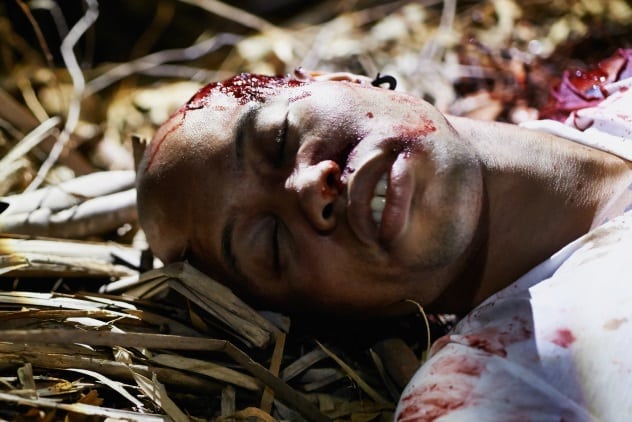
Hardel Haynes is the second electrician to appear on this list, and he suffered the same fate as Muhammad al-Zahra. Haynes lived in Guyana, where it was not uncommon for vigilante citizens to capture and beat up thieves and other criminals. In response to this, local law enforcement instructed that any criminal captured by the citizens should be delivered to the police, preferably without injuries. Unfortunately for Haynes, this instruction came in the aftermath of the police mishandling his case.
In 2008, the badly injured Hardel Haynes was dropped in front of a Guyanese police station. Haynes’s wife happened to be a special constable attached to the Ministry of Home Affairs. When she found out about the situation, she had a difficult time finding out what her husband’s status was and where he was at all. The police station didn’t even pick up the phone at first. When she tried her husband’s cell phone, a man identifying himself as a police officer answered and told her to call the station. When she finally got through, people treated her rudely and refused to answer her questions directly. They said they couldn’t get the badly injured Haynes to a hospital because they didn’t have a car available. They said they hadn’t arrested the people who left him there because they didn’t have enough manpower. Occasionally, they hung up on her.
Haynes was eventually taken to a nearby hospital, where he died. A local newspaper later found out that the person who had left Haynes at the station was a retired senior police officer himself.
All of this may seem like a conspiracy: Clearly, the retired high-ranking officer beat up Haynes, and the other cops were covering his tracks. However, that’s not what really happened.[3] Haynes had actually been riding his bicycle home late in the night. He was suddenly jumped by a mob of men who had mistaken him for a burglar who had stolen their neighbor’s TV. Two members of the mob were eventually charged with manslaughter. The retired police officer happened to be part of the neighbor mob, but he was not a killer—he was actually the one who told the others that they should get Haynes to the police.
7 Whatsapp Vigilante Attacks
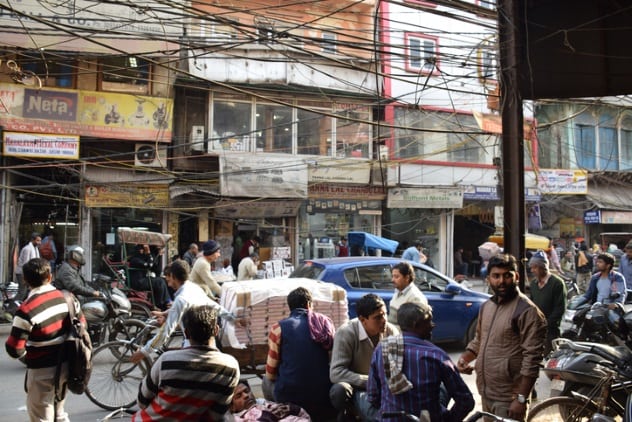
Social media rumors can be unpleasant, but they don’t usually end in tragedy and loss of life. In 2017, Central India became an exception to this rule, thanks to rumors circulating on WhatsApp. The malicious message came in the form of a viral video that showed a motorcycle rider abducting a child and warned of strangers who were abducting children in the area. In reality, the video was a clip from a Pakistani child safety awareness film, but that didn’t matter.[4] As hysteria increased, angry crowds started forming. Mobs swelled to more than 500 people within hours. That’s when the killing started.
In two separate mob attacks, a total of seven “child abductors” were ruthlessly beaten to death. Sometimes, the police were present but merely looked on. At least one of the incidents was filmed and put on YouTube, possibly because someone thought that a campaign of terror that starts with a viral video needs to end with a viral video.
The seven mob victims were all completely innocent passersby who just happened to be in the wrong place at the wrongest possible time. There were no records of child abductions in the area, and the police promptly started investigating who was behind the WhatsApp messages.
They soon found that it’s very difficult to fight social media and debunk popular rumors: Just one month later, a similar child abduction mob killed two men whose only crime was stopping in their village to ask for directions.
6 The Tourist Who Was In The Wrong Place At The Wrong Time

Sebastian Judalet was a French bus driver and a father of one. In 2013, he went on a trip to Nosy Be, an island near Madagascar that he loved and often visited. He was probably expecting a relaxing holiday on an island paradise. Instead, he ended up in the middle of a nightmare when a crowd of several hundred locals surrounded him. They suspected that Judalet was the pedophile who had recently murdered and mutilated a eight-year-old local boy, and they were out for justice.
The moments of confusion and blind panic that led to Judalet’s death were actually caught on tape.[5] “I am the victim of a conspiracy,” Judalet can be heard to cry as members of the crowd accuse and interrogate him. “I do not like children, absolutely not, and I don’t like people who have sex with children.” This comment may have sealed his doom, as a vigilante next asks him: “So you don’t like children?” A tearful Judalet responds: “I love children, yes, I have a little girl. I’m telling the truth, strictly the truth.” That was enough for the mob to come to a conclusion: They dragged poor Judalet to a nearby beach, where he was stripped naked, beaten, and burned alive. He pleaded innocence to his final breath. Two other equally innocent men shared his fate.
5 Mob Mistakes Two Innocent Bystanders For Terrorists
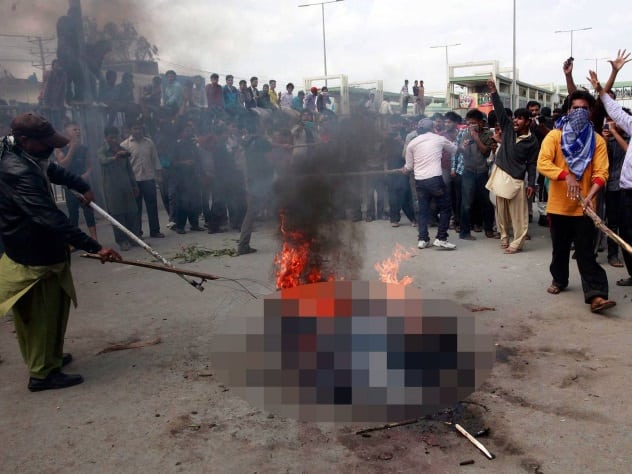
In 2015, a Taliban-associated splinter terrorist group called Jamaat-ul-Ahrar sent two suicide bombers to attack Lahore, Pakistan. The bombers targeted two local churches in brutal attacks that killed 17 people and injured 80. Understandably, the locals were panicked and furious in the aftermath of the explosions. However, with the bombers dead and nowhere to target their fury, the younger members of the population formed a mob and started to search for people they felt were responsible for the attack.[6]
The mob soon found two completely innocent bystanders who they decided to blame. They confronted garment worker Babar Noman and glass cutter Mohammad Saleem, beat them unconscious, and dragged them through the crowds. Then, their prone bodies were covered with wood that the mob had found in a nearby shop. The poor, innocent men were set on fire and burned while hundreds of men looked on and cheered.
You might wonder why the police didn’t stop the brutality. After all, they must have been present on the scene of terrorist attacks.
Well, they were. They were just so heavily outnumbered that they had no choice but to look on as the men were brutally murdered.
4 The Man Who Was Found Innocent Nearly A Century Later

The year was 1906. Ed Johnson, a young African American man from Chattanooga, Tennessee, stood under a metal girder of the Walnut Street Bridge with a noose around his neck. He faced the town-sized mob of white men, women, and children and said: “God bless you all. I am innocent.” Then, they hanged him and riddled his body with bullets.
Johnson had been sentenced to death for raping a white woman. However, an air of suspicion lingered around the case. The victim could never identify Johnson properly, and a member of the all-white jury openly threatened him with violence. As a result, the Supreme Court felt that the verdict didn’t hold water and issued a stay on Johnson’s execution so that he could file an appeal for what was clearly a violation of his right to a fair trial. The residents of Chattanooga disagreed and took matters into their own hands.
It would be an understatement to say that the Supreme Court didn’t like this blatant disregard of their orders. They were so angry that they started the first and only criminal court case in their history, against the town’s sheriff, members of law enforcement, and assorted mob members. Several of them were found guilty of contempt of court.
As for poor Ed Johnson, he was an innocent victim of the time’s unfortunate habit of solving crimes by locating an African American man and quickly sentencing him. However, his official vindication didn’t come immediately. It wasn’t until 2000 that two (white) lawyers who had researched his case successfully cleared his name in court.[7]
3 The Rumor That Took Bijan Ebrahimi’s Life

The story of 44-year-old Bijan Ebrahimi is a textbook example of an ugly rumor with even uglier consequences.[8] Ebrahimi lived in Bristol, UK. The people who knew him vouched that he was a gentle, caring man who lived for his garden. There was only one thing that annoyed him: Local kids who kept attacking his hanging baskets. So he devised a plan. He started taking pictures of the mischievous children as they attacked his precious garden. His intention was to take the photos to the police as evidence. Unfortunately, before he could do that, someone saw him with a camera . . . and told the police that Ebrahimi had been taking pictures of children.
The police took Ebrahimi in for questioning, and the local rumor mill immediately started spinning. Several neighbors were already chanting “Pedo! Pedo!” at Ebrahimi as he was taken away. The cops soon realized that he had done nothing wrong and released him, but the home he returned to was now a hostile place. Everyone in the neighborhood believed that the unemployed, disabled man was a child abuser. What’s worse, some of his neighbors were so furious that they were prepared to do something about it. Only two days after the incident, Ebrahimi’s 24-year-old neighbor Lee James (right above) attacked him at night. He beat Ebrahimi unconscious and dragged the helpless man into the street with his friend, Stephen Norely (left above). Then, he doused Ebrahimi in alcohol and burned him to death.
A subsequent investigation found that Ebrahimi had been harassed before, and both the council and the police had repeatedly sided with his abusers.
2 The Mass Lynching Of Italian Americans
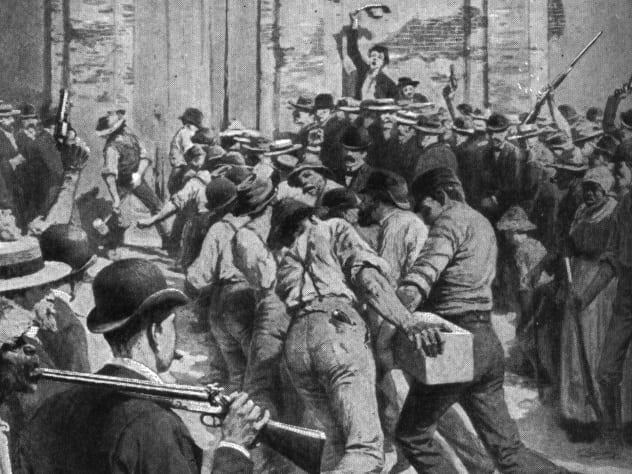
The history of the United States features many cases of mob brutality and lynchings. One of the most surprising targets of these hate crimes was an ethnic group that most people today don’t even think of as anything other than white: Italian immigrants. In the late 19th century, however, they were so hated that the victims of one of the largest mass lynchings in US history were Italian Americans.
In 1891, New Orleans police chief David Hennessy was murdered. Nine Italian immigrants were arrested and put on trial for the crime. The court found them not guilty, which didn’t please the outraged people of New Orleans. Soon after the verdict, a furious mob attacked the jail and dragged all nine men away, together with two other Italians who were held there for entirely different reasons. All 11 men were brutally lynched. Although the Los Angeles Chinese Massacre of 1871 had a higher body count (18 victims), the New Orleans attack was just the tip of the iceberg for the unfortunate Italian American population.
The attack sparked a huge torrent of hatred. There were mass arrests of Italians in the New Orleans area and nationwide attacks against them. Worst of all, the media narrative completely agreed with the attackers. The New York Times described the victims of the original mob attack as “sneaking and cowardly Sicilians, the descendants of bandits and assassins.” Meanwhile, the paper saw the people who murdered them as heroes, arguing that “lynch law was the only course open to the people of New Orleans.”[9] Future president Theodore Roosevelt felt that the lynchings were “a rather good thing.” Perhaps worst of all: John Parker, who helped organize the mob, later became the governor of Louisiana, despite openly spewing hate against Italians as late as 1911.
1 The Lynching Victim Who Became A Symbol For The Civil Rights Movement
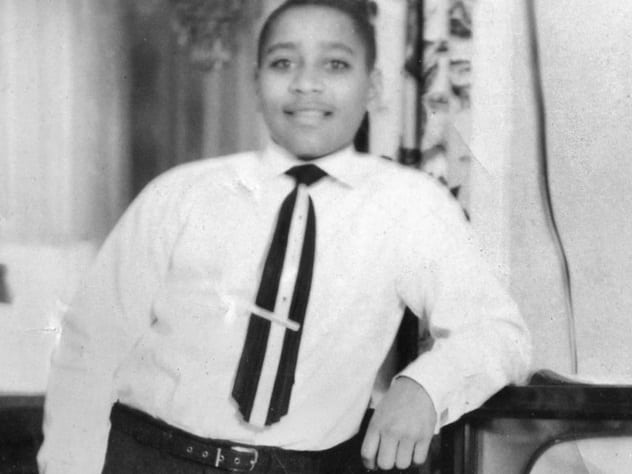
In 1955, a 14-year-old African American boy named Emmett Till left his native Chicago and traveled to Mississippi to spend the summer with his cousins. He never returned home.
On August 4, Till and his cousins wrapped up a hard day of picking cotton, and Till decided to buy bubblegum at a store owned by Roy and Carolyn Bryant, a 20-something white couple. Carolyn was tending to the store alone when Till went in. Exactly what happened next is a mystery to this day. Carolyn Bryant claimed that Till flirted with her on a dare, but the details of her story kept changing. Till’s own cousin says that he heard Till whistle after Carolyn, but that’s about it.[10] What we do know, however, is that Carolyn Bryant soon came out of the store, toward her car, where she kept her gun. Being from a comparatively safe Chicago neighborhood, Till didn’t realize the danger he was in, but his local cousins knew better and drove him away.
Unfortunately, danger followed. Four days later, Roy Bryant and his half-brother arrived at the door of the house Till was staying in. Announcing that they were looking for “the boy who did the talking,” they forced their way in at gunpoint and dragged Till into the night. His lifeless body was found three days later. It was so badly mutilated that they could only recognize him by the signet ring on his finger. His killers were found not guilty. Protected by double jeopardy, they happily smoked cigars and posed for photographs while boasting about the murder.
Till’s mother was understandably furious and wanted the world to see what had happened to her boy. She had Till’s remains returned to Chicago, where she arranged a massive open-coffin funeral. She left Till’s mangled, unembalmed body on display for four days. During that time, over 100,000 people came to see it, often leaving in tears.
Fortunately, many of them were also determined to make sure that no one else would have to suffer poor Emmett Till’s fate. In the end, the case touched so many people that Reverend Jesse Jackson later called it the “Big Bang” of the Civil Rights Movement.
+ Brazil’s Vigilante Epidemic

In Brazil, lynch mobs are so common that they are described as an epidemic. According to a report by The Guardian, such mobs killed 173 people in 2016 alone.[11] The accusations that led to their deaths varied from child assault to misdemeanors as petty as stealing a bicycle or even a mere pair of sandals.
The only common thread is that just an accusation is enough for a crowd to turn into judge, jury, and executioner. What’s more, as many as 57 percent of Brazilians agree that “a good criminal is a dead criminal.” Poor neighborhoods have been known to bear graffiti that says: “You steal, you die.” This reactive attitude makes it extremely likely that innocent people have been killed by the mobs.
Researchers have looked into Brazil’s tendency to deal vigilante justice wholesale. It appears to be a symptom of the extremely difficult period that the country is currently going through: Within just a few years, Brazil has seen the impeachment of a president, a Zika virus epidemic, the most massive corruption scandal in the country’s history, and, as a cherry on top of the terror cake, the worst economic recession in 80 years. According to Cesar Barreira, head of the Violence Studies Lab at the University of Ceara, the fear and hopelessness this creates is fertile ground for vigilante mobs: “A lynching is a communal act in response to a sense of impotence. It’s a hunt for an infection inside a social group.”
In Brazil’s case, it doesn’t hurt the mobs that vigilante justice isn’t written in the country’s penal code. As such, official data does not exist, and the government doesn’t really keep tabs on mob violence as a widespread phenomenon.
Read about more cases of vigilantism on 10 Vigilante Parents Who Sought Justice For Their Children and 10 People Who Got Away With Vigilante Justice.








